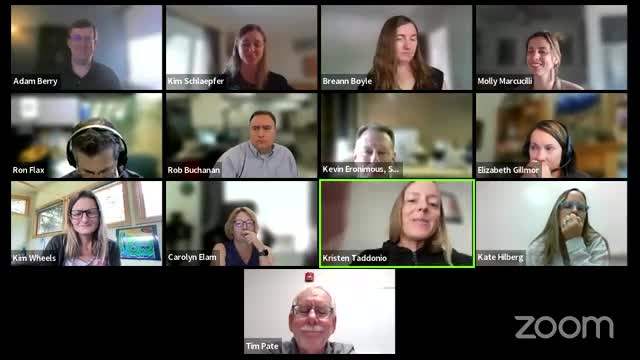Colorado experts propose high-efficiency filters to enhance indoor air quality in buildings
April 27, 2025 | Energy Office, State Agencies, Organizations, Executive, Colorado
This article was created by AI summarizing key points discussed. AI makes mistakes, so for full details and context, please refer to the video of the full meeting. Please report any errors so we can fix them. Report an error »

In a recent meeting of the Energy Code Board, members discussed critical issues surrounding energy equity, affordability, and indoor air quality, emphasizing the need for improved building ventilation systems in Colorado. The conversation highlighted the importance of balancing energy efficiency with health concerns, particularly in light of increasing wildfire seasons that can impact air quality.
One key proposal emerged from the discussion: the need to ensure that energy recovery ventilators (ERVs) installed in buildings are calibrated for high-efficiency filters. Currently, many ERVs are shipped with basic filters that do not adequately protect against smoke and fine particulates, which can worsen respiratory issues like asthma. By specifying that these systems be calibrated for better filters at the time of installation, the board aims to enhance indoor air quality without imposing significant costs on building owners.
However, the conversation also revealed potential pitfalls. Experts cautioned that simply replacing filters with more restrictive options could increase energy consumption due to higher static pressure in the HVAC systems. Instead, they suggested using dedicated filter boxes with larger surface areas to maintain efficiency while improving air quality.
The meeting also touched on the broader implications of carbon emissions related to building energy codes. Members noted that the current cost analyses do not account for the health and environmental impacts of carbon, which could lead to a more comprehensive understanding of the true costs associated with building practices.
As Colorado continues to face challenges from wildfires and air quality issues, the discussions from this meeting underscore the importance of integrating health considerations into energy codes. The board's recommendations could lead to significant improvements in both indoor air quality and energy efficiency, ultimately benefiting residents across the state. The next steps will involve further exploration of these proposals and their potential implementation in upcoming energy code revisions.
One key proposal emerged from the discussion: the need to ensure that energy recovery ventilators (ERVs) installed in buildings are calibrated for high-efficiency filters. Currently, many ERVs are shipped with basic filters that do not adequately protect against smoke and fine particulates, which can worsen respiratory issues like asthma. By specifying that these systems be calibrated for better filters at the time of installation, the board aims to enhance indoor air quality without imposing significant costs on building owners.
However, the conversation also revealed potential pitfalls. Experts cautioned that simply replacing filters with more restrictive options could increase energy consumption due to higher static pressure in the HVAC systems. Instead, they suggested using dedicated filter boxes with larger surface areas to maintain efficiency while improving air quality.
The meeting also touched on the broader implications of carbon emissions related to building energy codes. Members noted that the current cost analyses do not account for the health and environmental impacts of carbon, which could lead to a more comprehensive understanding of the true costs associated with building practices.
As Colorado continues to face challenges from wildfires and air quality issues, the discussions from this meeting underscore the importance of integrating health considerations into energy codes. The board's recommendations could lead to significant improvements in both indoor air quality and energy efficiency, ultimately benefiting residents across the state. The next steps will involve further exploration of these proposals and their potential implementation in upcoming energy code revisions.
View full meeting
This article is based on a recent meeting—watch the full video and explore the complete transcript for deeper insights into the discussion.
View full meeting
